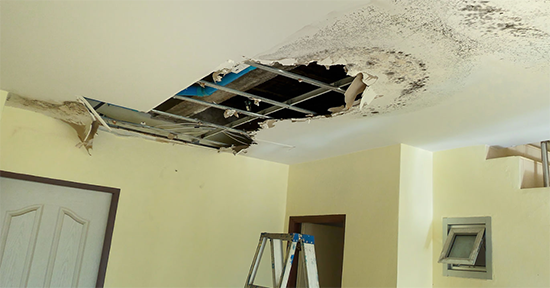Disasters, whether natural or man-made, can leave a trail of devastation that significantly impacts individuals, families, and communities. When such events occur, the role of a claims assessor becomes crucial in evaluating the extent of property damage and facilitating the claims process for affected parties.
Understanding the Role of a Claims Assessor
A claims assessor, often known as a claims adjuster, is a specialist who examines insurance claims to establish the insurer’s culpability. They play a vital role in the aftermath of disasters by assessing damages, collecting evidence, and providing recommendations for claim settlements. Their evaluations help ensure that policyholders receive fair compensation for their losses, making their role critical during the recovery phase.
The Assessment Process: Step-by-Step
1. Initial Contact and Claim Filing
The process begins when a policyholder files a claim with their insurance company. Once the claim is submitted, the insurer assigns a claims assessor to the case. The claim assessor contacts the policyholder to gather initial information about the damage and to schedule a visit to the property.
2. Site Visit and Inspection
During the site visit, the claims assessor conducts a comprehensive inspection of the property. They look for signs of damage, including structural issues, water damage, fire damage, and any other relevant factors. This step is critical for forming an accurate understanding of the situation.
3. Documentation and Evidence Collection
As the assessor inspects the property, they meticulously document their findings. This documentation may include:
- Photographs and Videos: Visual evidence helps provide a clear picture of the extent of the damage.
- Written Descriptions: The assessor notes specific details about the type and severity of the damage.
- Witness Statements: Interviews with the property owner and any witnesses can provide valuable context.
4. Analysis of the Cause of Damage
Understanding the cause of the damage is crucial for determining liability and the insurance coverage that applies. The claims assessor investigates various factors, such as:
- Weather Conditions: They may review weather reports to assess if the damage was due to a natural disaster.
- Building Codes and Regulations: Assessors ensure that any prior work on the property adhered to relevant codes, which may affect coverage.
5. Estimation of Repair Costs
Once the damage is assessed and the cause is determined, the claims assessor calculates the cost of repairs or replacement. This involves:
- Consulting Repair Professionals: They may seek estimates from contractors or specialists to gauge the cost of repairs.
- Using Industry Standards: The assessor applies standardized methods for estimating costs, ensuring consistency across claims.
6. Report Compilation
After completing the assessment, the claims assessor compiles a comprehensive report that includes:
- Summary of Findings: A detailed account of the damage, including photographs and descriptions.
- Repair Estimates: A breakdown of the estimated costs for repairs or replacement.
- Recommendations for Settlement: Suggestions for the compensation amount based on their findings.
7. Communication with the Insurance Company
The final report is submitted to the insurance company, which uses the information to determine the settlement offer. The claims assessor may also communicate directly with the insurer to clarify any points or provide additional insights.
Challenges Faced by Claims Assessors
Evaluating property damage after a disaster is not without its challenges. Claims assessors must navigate various hurdles that can complicate the assessment process:
- Emotional Stress of Claimants: Many policyholders are dealing with significant emotional stress following a disaster. Claims assessors must approach these situations with empathy and professionalism.
- Complexity of Damages: The extent of damage can vary widely, and some properties may have hidden issues that are not immediately apparent. Assessors need to be thorough and diligent in their evaluations.
- Conflicting Information: In some cases, assessors may encounter conflicting accounts of the events leading to the damage. It’s essential for them to piece together accurate narratives based on evidence.
- Time Constraints: After a disaster, there may be a surge in claims, leading to time constraints for assessors. Balancing efficiency with accuracy is crucial in these situations.
- Evolving Regulations and Policies: Insurance policies and regulations can change over time. Claims assessors must stay updated on the latest rules to ensure accurate assessments.
Conclusion
The evaluation of property damage after a disaster is a complex but crucial process, with claims assessors at the forefront of this effort. Their expertise in investigating damage, gathering evidence, and estimating repair costs ensures that policyholders receive the compensation they deserve. By understanding the role and responsibilities of claims assessors, individuals can better navigate the often-challenging claims process, paving the way for recovery and rebuilding after a disaster. Their work not only supports individuals but also contributes to the overall resilience of communities in the face of adversity.
See also Giuliana Pisano dob 6/28/24: Nurturing a Healthy Start from Birth
Frequently Asked Questions (FAQs)
1. What qualifications do claims assessors need?
Claims assessors typically need a background in insurance, finance, or a related field. Many hold certifications from professional organizations and may require state licensure, depending on their location.
2. How long does the claims assessment process take?
The duration of the assessment process can vary based on the complexity of the damage and the number of claims being handled.
3. Can I be present during the assessment?
Yes, policyholders are encouraged to be present during the assessment. This allows them to provide context about the damage and ask questions.
4. What happens if I disagree with the assessor’s findings?
If you disagree with the claims assessor’s findings, you can appeal the decision. This may involve providing additional evidence or obtaining an independent assessment.




